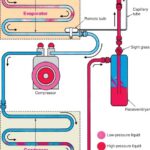Hospice care provides compassionate healthcare for individuals facing a terminal illness, typically when life expectancy is estimated to be six months or less. Within hospice, there are varying levels of care designed to meet different patient needs as they navigate the final stages of life. These levels ensure that patients receive the appropriate support and comfort wherever they are in their journey. Understanding these levels, particularly what distinguishes inpatient hospice care, is crucial for patients and their families. Let’s explore the different levels of hospice care and specifically focus on the criteria that define inpatient hospice care.
Understanding the Levels of Hospice Care
Hospice care is not a one-size-fits-all approach. It’s structured into four distinct levels to provide flexibility and ensure patients receive the most suitable care based on their current medical and emotional needs. These levels are designed to work together seamlessly, allowing patients to transition between them as their condition evolves.
Routine Home Hospice Care
Routine hospice care is the most frequently utilized level of support. It’s designed for patients who are managing their symptoms at home, whether that home is their personal residence, an assisted living facility, or a nursing home. This level emphasizes a collaborative approach between the hospice care team and the patient’s primary caregivers, who are often family members or facility staff.
The core of routine care involves symptom management and enhancing comfort. Hospice nurses and certified nursing aides are central to this, providing essential services such as assistance with personal hygiene, medication administration, nutritional guidance, meal preparation, and light household tasks that the patient may find challenging. Beyond nursing support, the routine care team includes a range of professionals. Physicians offer diagnostic services like lab work and x-rays, social workers provide emotional support and connect families with resources, and therapists offer physical and speech therapy to maintain patient functionality and communication. Crucially, routine care also extends to emotional and spiritual support, offering bereavement counseling for families both before and after the patient’s passing, often for up to a year or more.
Continuous Home Hospice Care
Situations can arise where a patient experiences a medical crisis at home, and their symptoms intensify suddenly. When these acute symptoms become too challenging for primary caregivers to manage alone, continuous hospice care becomes necessary. This level is designed to provide intensive, short-term care at home, honoring the patient’s preference to remain in a familiar environment whenever possible.
Continuous care involves hospice nurses providing around-the-clock care, often working in shifts for up to 24 hours a day, directly in the patient’s home. The focus is on aggressively managing acute symptoms to regain control and stability. While the qualifications for inpatient hospice care share similarities with continuous care in terms of symptom severity, inpatient care is typically considered when symptoms are even more acute and cannot be effectively managed at home. Continuous care is generally a temporary intervention, typically lasting from 2 to 5 days. The primary goal is to stabilize the patient’s condition so they can return to routine hospice care at home. During this period, a hospice physician may also be involved to consult with the patient’s primary doctor and further refine the care plan.
What Qualifies for Inpatient Hospice Care?
Inpatient hospice care is the most intensive level of hospice support, offered for patients who require symptom management that cannot be effectively provided at home, even with continuous home hospice care. This level of care is delivered in a contracted inpatient facility, which could be a hospital, a skilled nursing facility, or a dedicated hospice inpatient unit.
The primary qualification for inpatient hospice care is uncontrolled symptoms. This means the patient is experiencing severe pain or other distressing symptoms that:
- Cannot be managed at home: Despite the best efforts of the hospice team and caregivers providing routine or continuous home care, the patient’s symptoms remain unmanageable in a home setting. This could be due to the complexity of medication administration, the need for specialized equipment, or the intensity of nursing care required around the clock.
- Require acute care: The symptoms are severe and necessitate a level of medical intervention that is typically only available in an inpatient setting. Examples of such symptoms include:
- Severe, intractable pain: Pain that is not relieved by standard pain management approaches in the home setting.
- Uncontrolled nausea and vomiting: Persistent and severe nausea and vomiting leading to dehydration and electrolyte imbalances.
- Severe respiratory distress: Difficulty breathing that requires continuous monitoring and interventions like oxygen therapy or suctioning beyond what can be managed at home.
- Agitation or delirium: Severe restlessness, confusion, or altered mental status that poses a safety risk to the patient or caregivers and requires close medical supervision.
- Seizures: Recurrent seizures that need immediate medical attention and monitoring.
It’s important to understand that inpatient hospice care is typically for acute symptom crises and is not intended for long-term residency. The goal of inpatient care is to stabilize the patient’s condition so that they can return to a lower level of care, ideally routine hospice care at home, once their symptoms are effectively managed. The hospice team continuously assesses the patient’s needs and will transition them back to home care when appropriate.
Conclusion
Understanding the different levels of hospice care empowers patients and families to navigate end-of-life care with greater clarity and confidence. While routine and continuous home care levels provide vital support in the familiar surroundings of home, inpatient hospice care offers a crucial resource for managing acute, uncontrolled symptoms that require a higher level of medical intervention. The focus remains on providing comfort, dignity, and the best possible quality of life for patients throughout their hospice journey, ensuring they receive the right level of care at the right time.
